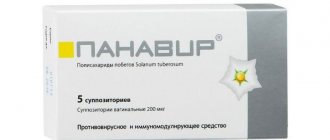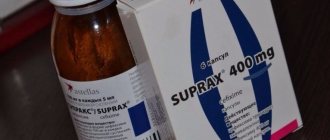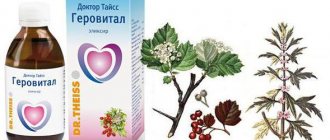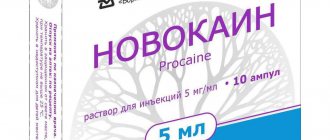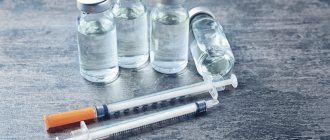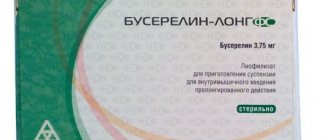From this article you will learn:
- what lidocaine-based drugs are used in dentistry,
- How much stronger is lidocaine than novocaine?
- What anesthetics are even stronger than lidocaine.
The article was written by a dental surgeon with more than 19 years of experience.
Lidocaine is a drug that is a local anesthetic, which is used for pain relief during the treatment and extraction of teeth, as well as when opening purulent abscesses. The analgesic effect of this drug is approximately 2 times higher than the effectiveness of novocaine, but 1.5-2 times inferior to ultracaine. For lidocaine, the instructions for use of the drug in dentistry contain information about the following forms of release:
- lidocaine in ampoules (or carpules),
- lidocaine spray,
- lidocaine gel.
Below we will analyze in detail the use of each form, their pros and cons.
Compound
The solution for intravenous administration includes the active component lidocaine hydrochloride (monohydrate form).
An additional component is water for injection. The active component included in the injection solution is also lidocaine hydrochloride (monohydrate form), additional components are sodium chloride, water.
Spray 10% for topical use contains lidocaine , as well as additional components: propylene glycol, peppermint oil, 96% ethanol.
Eye drops contain lidocaine hydrochloride , as well as benzethonium chloride, sodium chloride, and water.
The gel for external use also contains a similar active substance.
Effect of use
10% lidocaine spray for topical use is used very often. Patients note that the effect of use is noticeable within five minutes after spraying. Complete numbness of the treated area occurs within 15 minutes.
As soon as the product hits the mucous membranes, it begins to be quickly absorbed and absorbed into the bloodstream. At the same time, the speed of the process directly depends on the volume of the treated area, the degree of blood supply, the total volume of the dose or the duration of application.
If the spray gets on the mucous membranes in the oral cavity, the active substance quickly penetrates the digestive tract.
Lidocaine release form
The product is available in different forms:
- The solution, which is administered intravenously, is colorless and odorless. The solution is poured into ampoules of 2 ml, 5 pcs. in blister strip packaging. Two such packages are placed in a cardboard pack.
- The solution intended for injection is odorless and colorless, it is bottled in ampoules of 2 ml, in blister packs - 5 such ampoules. A solution of 10%, 2%, 1% is available.
- Spray with lidocaine 10 percent is a colorless alcohol solution that has a menthol aroma. Contained in bottles (650 doses), it is equipped with a special pump and spray nozzle. The bottle is placed in a cardboard box.
- Eye drops 2% are colorless and odorless, but sometimes they may be slightly colored. Contained in 5 ml polyethylene bottles.
- A gel is also available.
Short description
10% Lidocaine spray is available in small bottles with a convenient spray nozzle. The liquid is clear and has a characteristic menthol odor. Judging by the reviews, using the product is not difficult, because the spray bottle included in the kit is suitable for various parts of the body, including the throat.
It is known that 10% Lidocaine spray acts individually on each person, is absorbed differently and has a different analgesic effect. Much depends on the dosage and location of application of the liquid. The active components enter the cells of organs - heart, liver, lungs, kidneys. The drug also passes through the placenta and is found in the fatty tissues of the fetus.
pharmachologic effect
Lidocaine - what is it?
Wikipedia indicates that lidocaine is a derivative of acetanilide in chemical structure. It has a pronounced antiarrhythmic and local anesthetic effect.
The pharmacological group to which the active substance belongs is local anesthetics .
Inhibits nerve conduction by blocking sodium channels in nerve fibers and nerve endings, thereby providing a local anesthetic effect.
If we compare the anesthetic effect of procaine , then lidocaine is 2-6 times superior to it. Also, its effects develop faster and last longer. How long the drug lasts depends on the interaction with other drugs. If the drug is used simultaneously with Epinephrine , then the effect lasts more than 2 hours. When applied topically, vasodilation is observed, but no local irritating effect is noted.
In the body, it stabilizes the cell membrane, blocks sodium channels, increases the level of membrane permeability for potassium ions, which determines its antiarrhythmic effect .
Under its influence, repolarization in the ventricles is accelerated, the fourth phase of depolarization in Purkinje fibers is inhibited, without affecting the electrophysiological state of the atria.
It does not have a significant effect on myocardial contractility and conductivity. The negative inotropic effect is slightly pronounced, it manifests itself for a short time and only if the drug is administered in large doses.
Use to treat throat
Anesthetic spray "Lidocaine" is widely used to treat the mucous membrane in the throat area. The reviews left for the product say that it perfectly helps to cope with the elimination of painful sensations due to sore throat, as well as inflammation of the tonsils.
In order for the product to help, you need to spray one dose onto the problem area. After applying the substance to the mucous membrane of the throat, do not eat food or drink drinks for 2 hours. It is also not recommended to use other topical medications at this time.
The applied product should be absorbed very quickly, as evidenced by the disappearance of the tingling sensation in the throat that occurs immediately after applying the drug to the mucous membrane.
Pharmacokinetics and pharmacodynamics
The highest concentration in the blood after intravenous administration is observed after 5-15 minutes, if the infusion is carried out slowly without a saturating initial dose, the maximum concentration is observed after 5-6 hours, and in people with acute myocardial infarction it can be achieved after a long time - up to 10 hours. Binds to plasma proteins by 50-80%. It is quickly distributed in the body and penetrates the placental and blood-brain barriers.
Metabolism mainly occurs in the liver; microsomal enzymes , resulting in the formation of active metabolites - glycine xylidide and monoethylglycine xylidide . People with liver disease have a slower metabolism. Excretion occurs in bile and urine.
If lidocaine cream or other agents are applied topically, absorption depends on the dose and also on the site where the lidocaine cream or gel is applied. Absorption is affected by the rate of perfusion in the mucosa.
There is good absorption in the respiratory tract, so care must be taken to prevent the administration of the drug in toxic doses.
After injections of lidocaine intramuscularly, almost complete absorption is noted. It is distributed quickly and binds to proteins, depending on the concentration of the active ingredient, by 60-80%.
The half-life depends on the dose administered, it is 1-2 hours.
If an aerosol is used, its effect appears within 1 minute and lasts 1-2 minutes. There is a gradual disappearance of the achieved decrease in sensitivity over 15 minutes.
Side effects
Miscellaneous effects
When taking lidocaine, the liver may fail, as soon as the anesthetic effect appears (at the intervals of the 1st stage).
When the drug is applied, transient erythema, swelling and decreased sensitivity may occur.
Allergic reactions
This includes: sagging on the skin, itching, kropivyanka, angioedema, bronchospasm, and in extremely severe seizures - shock.
Once a hypersensitivity reaction appears after taking the drug, there is a trace of pinching.
System effects
Since Lidocaine, a spray, is infused according to the instructions, the frequency of development of systemic effects is extremely low, and the amount of active substance that can reach blood circulation is very small. When administered in high doses and in the presence of liquid ice caine, or in cases of increased sensitivity, idiosyncrasy, or reduced tolerance, the following side effects may develop:
from the side of the central nervous system
: anxiety, depression, nervousness, confusion, drowsiness, spasms, loss of fluidity, respiratory paralysis;
from the side of the cardiovascular system:
arterial hypotension, myocardial infarction, bradycardia, cardiac arrest.
Indications for use
A number of indications for the use of different forms of the drug are determined.
Indications for use intravenously and intramuscularly:
- for carrying out infiltration, spinal, epidural, conduction anesthesia ;
- for terminal anesthesia (also used in ophthalmology);
- for ventricular arrhythmias that are associated with glycoside intoxication;
- for the relief and prevention of the development of repeated ventricular fibrillation in patients with acute coronary syndrome, as well as repeated paroxysms of ventricular tachycardia .
In dentistry, Lidocaine in ampoules is used for local anesthesia during surgical interventions in the oral cavity:
- when removing baby teeth;
- when opening superficial abscesses ;
- when removing bone fragments and suturing wounds;
- for anesthesia of the gums for the purpose of fixing a prosthesis or crown;
- in order to suppress or reduce the enhanced pharyngeal reflex during preparation for an x-ray examination;
- before removal or excision of an enlarged papilla of the tongue;
- before excision of benign superficial mucosal tumors;
- for opening salivary gland cysts and frenulectomy in children.
Application in ENT practice:
- before septectomy , electrocoagulation , resection of nasal polyps;
- for additional pain relief before opening a peritonsillar abscess ;
- as additional anesthesia before puncture of the maxillary sinus ;
- before tonsillectomy for the purpose of pain relief and reduction of the pharyngeal reflex (not used for adenectomy and tonsillectomy in children under eight years of age);
- for pain relief before washing the sinuses.
Use for examinations and endoscopy:
- for anesthesia, if necessary, insert a probe through the mouth or nose;
- for anesthesia before performing rectoscopy and if necessary, replacing catheters.
Application in obstetrics and gynecology:
- for the purpose of anesthetizing the perineum for episiotomy or treatment;
- for anesthesia of the surgical field during a number of surgical interventions;
- for anesthesia when suturing in case of abscesses ;
- for pain relief during excision and treatment of hymen rupture.
Application in dermatology:
- for anesthesia of mucous membranes before minor surgical operations.
Application in ophthalmology:
- for anesthesia, if necessary, use contact research methods;
- for pain relief during short-term interventions on the conjunctiva and cornea;
- during preparation for ophthalmological operations.
Use in dentistry
If your tooth hurts, you can relieve the condition at home by using a spray. Practicing dentists sometimes use the drug on patients who have particularly sensitive gums. In this case, you can easily freeze the required area before applying general anesthesia.
But the product is also used alone in dental practice. Doctors often prefer to use it when removing tartar or applying small sutures to damaged gums. In addition, with the help of Lidocaine, pain relief is performed in children when it is necessary to trim the frenulum or open a salivary gland cyst.
Contraindications for use
Lidocaine in ampoules should not be used by people who have the following diseases and conditions:
- severe bradycardia ;
- sick sinus syndrome;
- sinoatrial block;
- AV blockade of the second and third degree (exception - when a probe is inserted to stimulate the ventricles);
- heart failure in acute and chronic form;
- WPW syndrome;
- significant reduction in blood pressure ;
- cardiogenic shock;
- Adams-Stokes syndrome;
- retrobulbar administration (for people suffering from glaucoma );
- intraventricular conduction disorders;
- pregnancy and lactation;
- severe sensitivity to the components of the product.
Caution Lidocaine IV and for injection is prescribed for chronic heart failure , hypovolemia , arterial hypotension , sinus bradycardia , severe renal and liver failure, first-degree AV block, reduced hepatic blood flow, epileptiform convulsions .
The drug is also prescribed with caution to elderly and weakened people, adolescents and children under 18 years of age, and patients with high sensitivity to other amide drugs for local anesthesia.
It is also important to consider that the patient may have contraindications to a certain type of anesthesia.
It should be noted that the aerosol is contraindicated for use in plaster dentistry as an impression material, as there is a risk of aspiration .
Side effects
When used, the following side effects may develop:
- Central nervous system: headache, euphoria , drowsiness , dizziness , disturbances of consciousness, weakness, convulsions, disorientation , paresthesia , nystagmus , tremor , neurotic reactions, photophobia , tinnitus, etc.
- Blood vessels and heart: decreased pressure, chest pain, collapse, bradycardia (possible cardiac arrest), peripheral vasodilation.
- Allergy symptoms: rash , itching , urticaria , angioedema , anaphylactic manifestations.
- Gastrointestinal tract: vomiting , nausea .
- Other manifestations: feeling of cold or heat, persistent anesthesia , hypothermia , methemoglobinemia , erectile dysfunction .
- Local manifestations: a slight burning sensation that disappears within 1 minute.
Instructions for use of Lidocaine (Method and dosage)
Lidocaine injections, instructions for use
Lidocaine hydrochloride can be used for infiltration anesthesia intramuscularly, intradermally, subcutaneously. A lidocaine solution of 5 mg/ml is used (the maximum allowable dose is 400 mg).
For the purpose of blocking the nerve plexuses and peripheral nerves, it is administered perineurally, 10-20 ml of solution is used. 10 mg/ml or 5-10 ml solution. 20 mg/ml.
- Conduction anesthesia involves the use of 10 mg/ml and 20 mg/ml perineurally.
- Epidural anesthesia involves the use of epidural 10 mg/ml or 20 mg/ml.
- Spinal anesthesia involves the use of subarachnoid 3-4 ml of a solution. 20 mg/ml.
To lengthen the effect of lidocaine, it is practiced to add a 0.1% solution of Adrenaline .
It is administered intravenously as an antiarrhythmic drug.
A solution of 100 mg/ml is used intravenously only after it is diluted with saline.
25 ml sol. 100 mg/ml is diluted with 100 ml of saline to obtain a concentration of 20 mg/ml. This solution is administered to the patient as a loading dose. Initially, it is 1 mg per kg of weight (injected over 2-4 minutes, the rate is 25-50 mg per minute). Next, a constant infusion is started, the rate of which is 1-4 mg/min. Next, the doctor adjusts the administration individually.
As a rule, the intravenous infusion lasts 12-24 hours, while ECG monitoring is carried out continuously.
Lidocaine spray, instructions for use
The spray must be sprayed onto the mucous membranes. The dosage depends on how large the surface area needs to be numbed. With a single spray, 4.8 mg of the active component is released. The minimum dose that provides the desired effect should be used. As a rule, the expected effect appears after 1-3 sprays. A larger number of sprays are used in obstetrics - 15-20 each, with the maximum permissible dose being 40 sprays for a patient weighing 70 kg.
The bottle should be held vertically while spraying the aerosol.
Some drugs ( Categel with lidocaine , Lidocaine Asept ) should only be administered by specialists.
If it is necessary to use an aerosol for children, it is applied with a cotton swab, as this avoids the burning sensation.
Ointment with lidocaine is applied to the surface in an amount that is determined individually.
Eye drops are used before interventions in ophthalmology; 20 mg/ml solution is instilled into the conjunctival sac. 2 drops each 2-3 times.
Overdose
Symptoms:
increased sweating, pale skin, confusion, headache, blurred vision, noise in the ears, diplopia, decreased arterial pressure, bradycardia, arrhythmia, drowsiness, chills, numbness Endings, restlessness, judgment, shock, methemoglobinemia, heartbreak.
Likuvannya.
Whenever necessary, ensure access to fresh air, supply of acid and/or individual cleaning.
Symptoms that result from overdose should be followed by additional succinylcholine
(1 mg/kg body weight) and/or diazepam (1 mg/kg body weight internally). Remnants of succinylcholine can cause dyspnea, which may be treated with other drugs, which may indicate endotracheal intubation and treatment of patients with dichotomy.
You can also use short-term barbiturates and thiopental.
If symptoms appear in the side of the cardiovascular system (bradycardia, impaired conduction), atropine (0.5–1 mg internally) and sympathomimetics should be prescribed.
In case of fibrillation of the scapula and the nerve of the heart, resuscitation is not recommended.
Dosage for children should be based on their age and body weight.
Overdose
If an overdose is noted, the patient’s first signs of intoxication may be nausea , dizziness , vomiting , a feeling of euphoria , asthenia , and decreased blood pressure. Later, spasms of facial muscles develop, turning into spasms of skeletal muscles. The patient also has bradycardia , psychomotor agitation, collapse, and asystole . If an overdose occurs during childbirth, the newborn may develop bradycardia , apnea , and depression of the respiratory center .
In case of overdose, it is necessary to stop administering the drug and inhale oxygen. Next, symptomatic breathing is carried out. If seizures develop, 10 mg of diazepam should be administered. In case of bradycardia, the administration of m-anticholinergic blockers (atropine) and vasoconstrictors . Hemodialysis will be ineffective.
Interaction
When used with other drugs, a number of interaction reactions may develop:
- When taking Cimetidine and beta-blockers, the risk of toxic effects increases.
- With simultaneous use, the cardiotonic effect of digitoxin .
- Enhances muscle relaxation of curare-like drugs .
- The negative inotropic effect is enhanced by concomitant administration of Verapamil , ajmaline , quinidine and amiodarone .
- The effectiveness of lidocaine is reduced by inducers of microsomal liver enzymes.
- When taking vasoconstrictors ( methoxamine , epinephrine , phenylephrine ) simultaneously, the local anesthetic effect of lidocaine may increase, and blood pressure may also increase and tachycardia .
- Lidocaine reduces the effect of antimyasthenic drugs .
- When used simultaneously with procainamide hallucinations may occur .
- Extends and enhances the effect of muscle relaxants .
- When taking mecamylamine , guanethidine , trimethaphan and guanadrel , the risk of a marked decrease in blood pressure and bradycardia increases.
- When phenytoin and lidocaine are used together, the resorptive effect of lidocaine is likely to decrease, and an undesirable cardiodepressive effect may also develop.
- When taking MAO inhibitors , the local anesthetic effect of lidocaine may be enhanced, and a decrease in blood pressure may also be observed. Parenteral lidocaine should not be prescribed to patients taking MAO inhibitors.
- polymyxin B are coadministered , it is important to monitor the patient's respiratory function.
- The inhibitory effect on respiration and the central nervous system may be enhanced if lidocaine is taken together with sedatives and hypnotics, as well as with hexenal , sodium thiopental , and opioid analgesics .
- If lidocaine is administered intravenously to people taking cimetidine, a number of negative effects may occur - drowsiness , drowsiness , paresthesia , bradycardia . If there is a need to combine these agents, it is necessary to reduce the dose of lidocaine.
- If the areas where lidocaine was injected were treated with disinfection solutions that contain heavy metals, the likelihood of local reactions increases.
special instructions
It is necessary to carry out anesthesia of highly vascularized to avoid injection into the vessels; it is recommended to conduct an aspiration test.
During treatment, it is important to drive carefully and perform other actions that require precision.
Preparations with lidocaine ( Lidocaine Asept , Kategel with Lidocaine, etc.) should be used very carefully if injuries to the mucous membranes are noted, as well as for people with mental retardation, elderly and debilitated patients.
When using the spray, it is necessary to avoid contact with the eyes and respiratory tract. Very carefully you need to apply the product to the back of the throat.
All precautions should be taken when using the spray for bikini hair removal, and also take into account contraindications when using lidocaine for toothache, lidocaine patch, etc. Experts categorically do not recommend using the spray to prolong sexual intercourse: in this case, you should use only prolongators prescribed by a doctor . It can be used for hair removal only if there is no individual intolerance to the drug.
Patients should note that this remedy cannot be used independently, without a doctor’s prescription. Ointment with lidocaine or anesthesin should also be used only as directed.
The drug should be used only at the required concentration. So, if the content of the solution is determined as 20 mg/ml, what percentage is determined simply: this is a 2% solution.
Lidocaine analogues
Level 4 ATX code matches:
Markain
Scandonest
Emla
Naropin
Versatis
Ubistezin
Ultracaine D-S Forte
Ultracaine D-S
Ultracaine
Artikain
A number of drugs are produced whose active substance is lidocaine. These products include Lidocaine-Asept spray , Lidocaine Bufus , Lidocaine-Vial , Helicaine , Xylocaine , Dinexan , Versatis , Lycaine , Strepsils Plus , etc.
A number of products are also produced with a similar effect, but with different active substances: Novocaine , Ultracaine , Tolperisone (tablets).
Lidocaine or Novocaine - which is better?
Novocaine is a medicine that demonstrates moderate analgesic activity, while Lidocaine is an effective anesthetic. However, Novocain is a less toxic drug.
Which is better: Lidocaine or Ultracaine?
Ultracaine is a less toxic drug. It provides longer-lasting anesthesia, but also has a number of contraindications for use.
Active ingredients
10% Lidocaine spray has a pronounced membrane-stabilizing effect. The instructions provide the full composition of the product, which determines its effect:
- Lidocaine - blocks pain impulses passing along nerve endings.
- Propylene glycol - promotes better absorption of the active substance.
- Ethyl alcohol - provides a disinfecting effect.
- Peppermint oil - adds a characteristic aroma and has an antiseptic effect.
Lidocaine belongs to the amide group. It has a persistent analgesic effect, but rather short-lived.
Lidocaine 10% spray is popular in medical circles and is known as a powerful and long-lasting pain reliever. As an anesthetic, the drug is more effective than novocaine or procaine.
In order to numb the required area, the product should be sprayed while holding the bottle in a strictly vertical position. It is recommended to keep the dispenser at a distance of 10 cm from mucous membranes or skin. The dosage directly depends on:
- the area of the wound and the surface where the required action is expected;
- desired effect;
- indications;
- age.
Typically, 2-4 pumps of the dispenser are required to achieve results. The maximum dosage is up to 40 compressions, but only if the patient’s weight reaches 70 kg.
Reviews of Lidocaine
Most often you can find reviews on the Internet about Lidocaine spray, they are mostly positive. Users write that the aerosol really effectively relieves pain immediately after application.
Especially often there are positive reviews about the use of hair removal . But experts do not recommend using the drug at your own discretion, for example, applying it to the head of the penis to prolong sexual contact.
There are also reviews about the effectiveness of the drug Kategel with lidocaine , which users are still advised to use under the supervision of a doctor.
Use of lidocaine spray during pregnancy and lactation
Studies have shown that a small part of lidocaine can pass into mother's milk. However, when applied to the skin, this dose is so insignificant that it will not harm the baby.
In emergency cases, when there is a need to use lidocaine spray, there is no need to stop breastfeeding. Provided that the use of lidocaine in the form of a spray is not systemic in nature, it does not affect the child in any way.
No studies have been conducted on the effect of the drug during pregnancy, so it is used for pregnant women only when there is no safer anesthetic agent.
Lidocaine price, where to buy
How much ampoules cost depends on the packaging and manufacturer.
The price of Lidocaine in 10% ampoules is 40-80 rubles per 10 pieces.
You can buy Lidocaine spray 10% for a price starting from 200 rubles. A numbing spray that contains lidocaine may be more expensive. The price of Lidocaine spray in Ukrainian pharmacies is on average 200 UAH. per package.
The price of Lidocaine gel is from 200 rubles per tube.
You can buy an aerosol, cream or ointment with lidocaine at any pharmacy.
A cathegel with lidocaine costs from 145 rubles.
buy a patch with lidocaine Versatis at a price of 530 rubles.
The price of lidocaine tablets depends on the drug and its manufacturer.
- Online pharmacies in RussiaRussia
- Online pharmacies in UkraineUkraine
- Online pharmacies in KazakhstanKazakhstan
ZdravCity
- Lidocaine drops hl.
2% 5 ml vial. No. 1 JSC Sintez 18 rub. order - Cathegel with lidocaine gel for places. approx. 12.5g syringe disposable. 5 pcs Montavit Pharmaceutical
RUR 736 order
- Cathegel with lidocaine gel 12.5 g 25 pcs. Montavit Pharmaceuticals Fabrik GmbH
RUB 2,692 order
- Lidocaine spray for local use. approx. 10% 650 doses 38g JSC Pharmaceutical Plant EGIS
360 rub. order
- Lidocaine Vial spray for local use. approx. 100mg/ml 38gZevim Pharmaceutical (Shandong) Co.Ltd
RUB 256 order
Pharmacy Dialogue
- Lidocaine (spray 10% 38g)Egis
RUB 359 order
- Katedzhel gel (tube 12.5 g with lidocaine No. 1 syringe tube) Montavit Fabrik
RUB 201 order
- Lidocaine-Vial (spray 10% 38g) Jewim Pharmaceutical (Shandong)
RUB 226 order
- Lidocaine Bufus (amp. 10% 2ml No. 10)Update of PFC JSC
100 rub. order
- Lidocaine (spray 10% 38g) FS.-Leksredstva
RUB 277 order
show more
Pharmacy24
- Lidocaine 2% 2 ml No. 100 ampoules solution ZAT FZ Egis, Ugorshchina
661 UAH.order - Cathegel with lidocaine 12.5g N1 syringe tube urethral gel Pharmaceuticalutische Factory Montavit GmbH, Austria
72 UAH order
- Lidocaine-Darnitsa 2% 2 ml No. 10 solution
13 UAH order
- Cathegel with lidocaine 12.5 g No. 5 gel Pharmaceuticals Factory Montavit GmbH, Austria
410 UAH. order
- Lidocaine hydrochloride 2% 2 ml No. 10 solution
11 UAH order
PaniPharmacy
- Lidocaine ampoule Lidocaine 20 mg/ml amp. 2ml No. 10 Ukraine, Lubnyfarm PJSC
14 UAH order
- LIDOCAINE ampoule Lidocaine solution d/in. 2% amp. 2ml No. 100 Hungary, Egis
740 UAH. order
- LIDOCAINE ampoule Lidocaine solution d/in. 2% amp. 2ml No. 10 Ukraine, Health LLC
10 UAH.order
- Katedzhel with lidocaine gel Katedzhel with lidocaine gel urethra. spr-tube 12.5 g N 1 Austria, Montavit
93 UAH order
- LIDOCAINE liquid Lidocaine spray 10% 38g Ukraine, Zdorovye LLC
199 UAH order
show more
